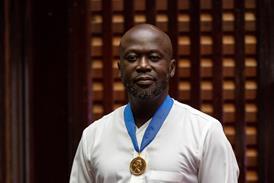- Home
 Reed announces new ‘medium site’ category to help SME housebuilders in latest planning guidance shake-up
Reed announces new ‘medium site’ category to help SME housebuilders in latest planning guidance shake-up Adjaye Associates cut half its UK staff last year as losses more than doubled
Adjaye Associates cut half its UK staff last year as losses more than doubled Hawkins Brown submits downsized Manchester Met Library scheme
Hawkins Brown submits downsized Manchester Met Library scheme Populous appointed to design new stadium for Leyton Orient FC
Populous appointed to design new stadium for Leyton Orient FC
- Intelligence for Architects
- Subscribe
- Jobs
- Events

2025 events calendar Explore now 
Keep up to date
Find out more
- Programmes
- CPD
- More from navigation items
Hatherley's not listening enough

Owen Hatherley’s critique of GCHQ (Opinion September 13) was as superficially vacuous as the apparently empty centre of the doughnut he chose to relieve his thinly veiled political prejudices on.
This is premium content.
Only logged in subscribers have access to it.
Login or SUBSCRIBE to view this story

Existing subscriber? LOGIN
A subscription to Building Design will provide:
- Unlimited architecture news from around the UK
- Reviews of the latest buildings from all corners of the world
- Full access to all our online archives
- PLUS you will receive a digital copy of WA100 worth over £45.
Subscribe now for unlimited access.
Alternatively REGISTER for free access on selected stories and sign up for email alerts


